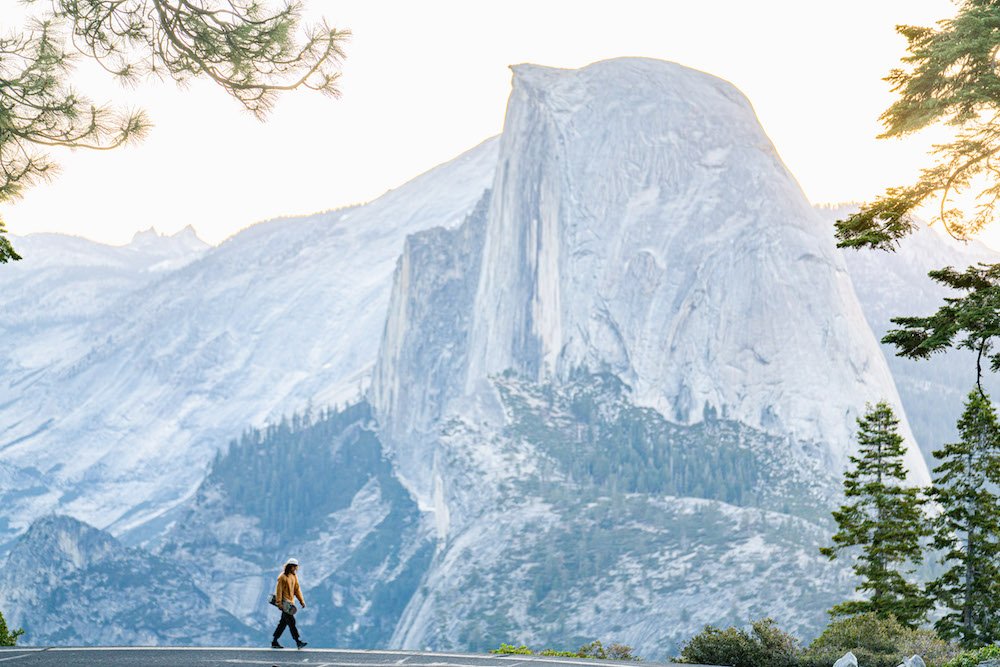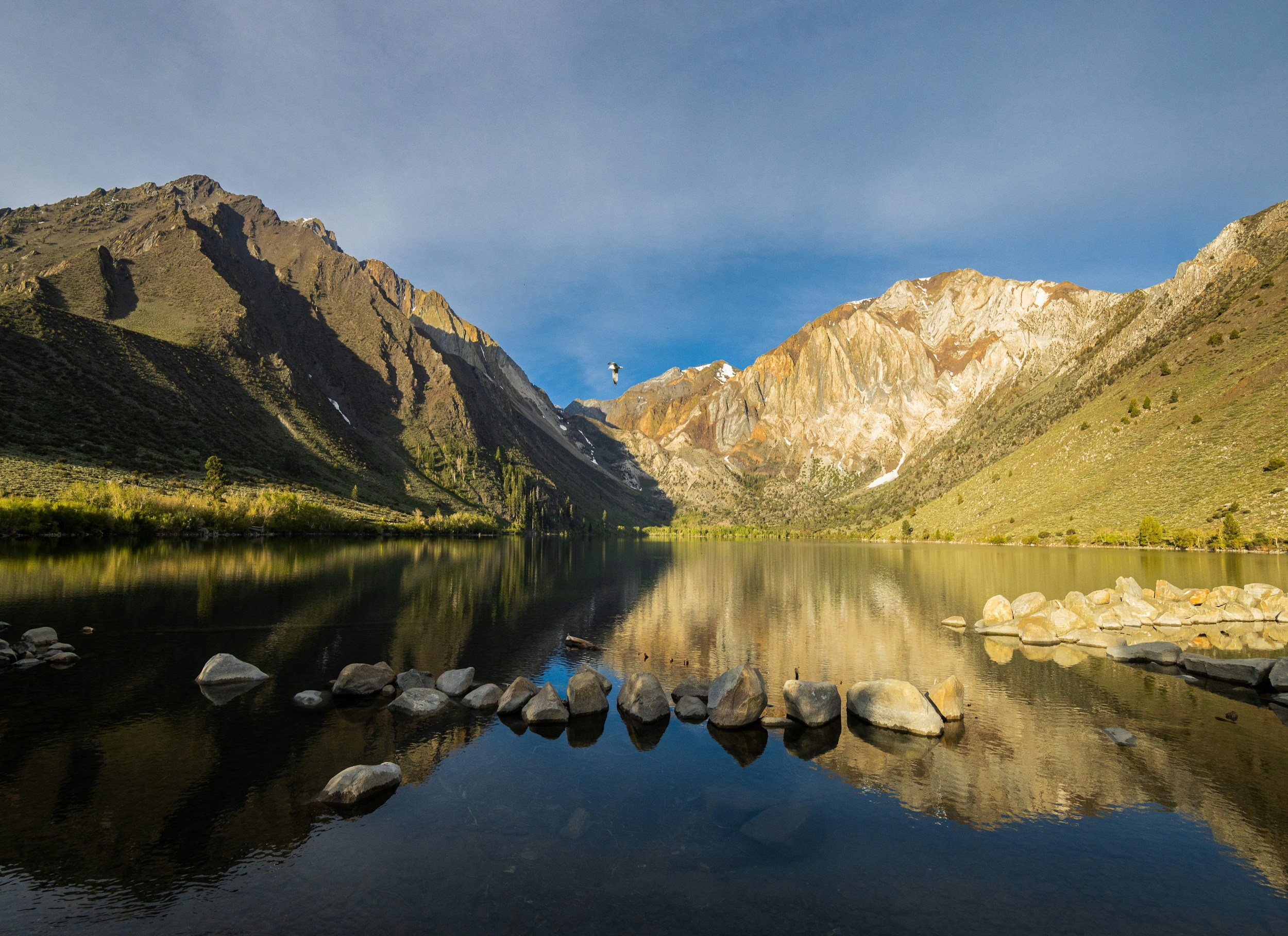The wilderness of Mammoth, where towering peaks and rugged landscapes beckon climbers from all corners of the globe. Amongst the plethora of climbing spots in this mountainous region, one destination stands out like a sparkling jewel in the rough: Crystal Crag. With its mystical allure and heart-pounding challenges, many climbers wonder if this granite wonderland truly reigns as the best rock climbing spot in Mammoth.
While Crystal Crag in Mammoth offers a diverse range of climbing routes, breathtaking scenery, and a close-knit climbing community, whether it is considered the absolute best rock climbing spot is subjective and depends on individual preferences and experiences. Climbers can expect an exhilarating adventure in this granite wonderland, but other climbing areas in Mammoth also boast their unique charm and challenges.
Join us as we embark on a journey to unravel the enigma of Crystal Crag and discover what makes it an unrivaled paradise for rock climbers.
Climbing the North Arete on Crystal Crag in Mammoth Lakes, CA. Photo by Dalton Johnson
Pros
Diverse Range of Routes: Crystal Crag offers an impressive selection of climbing routes suitable for climbers of all skill levels. Beginners can find moderate routes to gain experience, while advanced climbers can challenge themselves with exhilarating multi-pitch climbs.
Breathtaking Scenery: Climbers at Crystal Crag are treated to awe-inspiring views of the surrounding Sierra Nevada Mountains and the stunning Mammoth Lakes below. The natural beauty adds an extra dimension to the climbing experience.
Sense of Adventure: Crystal Crag's remote location and rugged terrain create a genuine sense of adventure. Exploring the hidden nooks and crannies of the crag offers a feeling of discovery and exploration.
Close-knit Climbing Community: The climbing community at Crystal Crag is welcoming and supportive. Climbers often share route beta and celebrate each other's successes, fostering a sense of camaraderie and friendship.
Spiritual Connection with Nature: Scaling the granite walls of Crystal Crag provides an opportunity to connect with nature on a deeper level. Climbers often experience a sense of awe and respect for the natural world as they ascend the rock faces.
Accessibility: Crystal Crag is relatively accessible compared to other climbing areas in the region. It's a short hike from the parking area, making it convenient for climbers looking for a quick adventure.
Quality Rock: The granite rock of Crystal Crag is renowned for its high quality, offering reliable holds and solid friction for confident climbing.
Cons
Seasonal Limitations: Due to its high elevation, Crystal Crag is subject to seasonal weather changes. It may be inaccessible during winter months due to snow and ice, limiting climbing opportunities to warmer seasons.
Crowds during Peak Season: Crystal Crag's popularity can lead to crowding during peak climbing season. Weekends, in particular, can get busy, resulting in potential wait times for popular routes.
Challenging Approaches: While the main climbing area is relatively accessible, some routes may require challenging approaches involving steep and rocky terrain, which could be daunting for less experienced climbers.
Rockfall Potential: As with any climbing area, there's a risk of rockfall, especially on multi-pitch routes. Climbers should exercise caution and wear helmets to mitigate this hazard.
Limited Amenities: Crystal Crag is a backcountry climbing destination, and there are limited amenities available. Climbers must be prepared with all necessary gear, food, and water for their climbing session.
Wildlife Encounters: The backcountry setting of Crystal Crag means encounters with wildlife are possible. Climbers should be mindful of their surroundings and follow proper wildlife safety protocols.
Variable Route Conditions: Depending on the season and weather, some routes may be affected by runoff or seepage, impacting climbing conditions.
A Landscape Carved by the Gods:
As the first rays of dawn cast a golden glow upon the Sierra Nevada Mountains, Crystal Crag emerges majestically from the shadows. With its granite spires soaring towards the heavens, it becomes evident why this location holds a special place in the hearts of climbers. The geological wonder of the area presents a myriad of climbing routes, catering to climbers of all skill levels, from beginners seeking an introductory experience to seasoned pros yearning for an adrenaline-pumping challenge.
A Playground of Endless Possibilities:
Crystal Crag boasts an astounding diversity of climbing routes, each with its own distinct personality and allure. Novice climbers can hone their skills on moderate routes, such as the classic "North Arete," which offers breathtaking views of the Mammoth Lakes below. Intermediate climbers can test their mettle on the "Crystal Crag Traverse," a thrilling adventure demanding a delicate blend of technique and tenacity. Meanwhile, the more audacious daredevils can brave the daring multi-pitch routes like "Redline" or "Lucky Streaks," promising the ultimate rush of accomplishment upon reaching their summits.
A Spiritual Connection with Nature:
What truly sets Crystal Crag apart from other climbing spots is the sense of spiritual connection it imparts on climbers. Scaling these ancient granite walls, one cannot help but feel a profound reverence for the natural world. The stunning vistas of the Sherwin Range and the surrounding alpine landscape remind us of the privilege and responsibility we have as climbers to protect and preserve these natural wonders for generations to come.
A Community of Like-Minded Adventurers:
As climbers converge on the crag, a palpable sense of camaraderie fills the air. The climbing community at Crystal Crag is a diverse tapestry of adventurers from all walks of life, united by a shared passion for exploration and a deep respect for the wilderness. From swapping route beta to celebrating each other's triumphs, the friendships forged on these sheer walls extend far beyond the climbing experience.
A Word of Caution:
While Crystal Crag undoubtedly offers a magical experience, it is essential to approach this climbing paradise with a sense of responsibility and mindfulness. As we venture into the backcountry, let us always prioritize Leave No Trace principles, respecting the wildlife, flora, and fragile ecosystems that surround us. Additionally, climbers should stay informed about local regulations and weather conditions, ensuring a safe and enjoyable climbing adventure.
History of Rock Climbing at Crystal Crag:
Crystal Crag's storied history as a rock climbing destination traces back to the early 1930s when adventurous climbers began exploring the uncharted granite walls of the Eastern Sierra. The crag's allure and mystical beauty quickly captivated these early pioneers, setting the stage for a legacy of climbing excellence that continues to this day.
Pioneering Explorations:
In 1932, a group of climbers led by Norman Clyde, a legendary mountaineer, and first ascensionist, ventured into the Sierra Nevada Mountains in search of new challenges. Clyde, alongside climbers Jules Eichorn and Glen Dawson, is credited with making some of the earliest recorded ascents on the Crystal Crag's prominent features.
Birth of Classic Routes:
Throughout the 1950s and 1960s, the climbing community witnessed the birth of some of Crystal Crag's most iconic routes. Visionary climbers, inspired by the natural beauty and the thrill of the ascent, established classic lines like "North Arete" and "Crystal Crag Traverse." These routes became benchmarks for the climbing community, attracting enthusiasts from far and wide.
An Era of Exploration:
The 1970s and 1980s marked an era of exploration and innovation at Crystal Crag. Climbers with a taste for adventure set their sights on the crag's untouched faces, forging new routes and pushing the boundaries of climbing difficulty. This period witnessed the rise of multi-pitch routes like "Redline" and "Lucky Streaks," adding to the crag's reputation as a playground for the bold and daring.
Preservation and Stewardship:
As Crystal Crag's popularity grew, so did the need for responsible stewardship. The climbing community recognized the importance of preserving the area's fragile ecosystem and its surrounding wilderness. Climbing organizations worked in collaboration with local land managers to establish sustainable access and promote Leave No Trace principles, ensuring that climbers could enjoy the crag responsibly for generations to come.
A Modern Climbing Destination:
Today, Crystal Crag stands as a modern climbing destination, blending its rich history with contemporary climbing culture. The crag continues to attract climbers of all skill levels, providing a wide array of challenges and experiences for enthusiasts seeking both traditional and sport climbing opportunities.
Honoring the Legacy:
As climbers scale the granite walls of Crystal Crag, they carry on the legacy of those who came before them, paying tribute to the pioneers and visionaries who first explored these majestic peaks. The crag remains a testament to the spirit of adventure, camaraderie, and love for the mountains that have defined the climbing community for decades.
Gear to Bring to Crystal Crag:
Climbing at Crystal Crag offers a unique adventure in the rugged wilderness of the Sierra Nevada Mountains. To ensure a safe and enjoyable climbing experience, it's essential to come well-prepared with the appropriate gear. Here's a comprehensive list of essential items to bring to Crystal Crag:
Climbing Gear:
Climbing Harness: Choose a comfortable and well-fitted harness to ensure safety during your climbs.
Climbing Shoes: Opt for sticky rubber-soled climbing shoes for precise foot placements on the granite walls.
Chalk Bag and Chalk: Keep your hands dry and improve grip with chalk during climbs.
Quickdraws: Pack an assortment of quickdraws (12-15) for sport climbing routes with pre-existing bolts.
Traditional Protection: Bring a double rack of cams, nuts, and slings for traditional climbing on routes that require placing your protection.
Dynamic Climbing Rope: Choose a rope appropriate for the routes you plan to climb, usually 60m or longer.
Rope Bag: Keep your rope clean and tangle-free with a rope bag for easy transportation.
Belay Device: Select a belay device suitable for your preferred belaying style, such as an ATC or GriGri.
Locking Carabiners: Carry a few locking carabiners for belaying and anchoring purposes.
A climbing helmet is essential for protection against potential rockfall and head injuries during climbing.
Backpack: Use a comfortable and appropriately sized backpack to carry your gear and essentials to the climbing site.
Appropriate Clothing:
Weather-Appropriate Clothing: Dress in layers to accommodate changing weather conditions. Pack a rain jacket and extra warm layers for cooler temperatures at higher elevations.
Climbing Pants: Choose durable and flexible climbing pants that allow freedom of movement.
Headlamp:
Carry a headlamp in case your climbing session extends into the evening hours.
Food and Water:
Bring sufficient snacks and water to stay hydrated and energized during your climbs. Consider bringing a refillable water bottle to reduce waste. Note: approach is long for those not used to climbing in the High Sierra
Sun Protection:
Sunscreen: Apply sunscreen to protect your skin from the intense mountain sun.
Sunglasses: Wear UV-protective sunglasses to shield your eyes from harsh glare.
Views from the sky over Mammoth Lakes, Lake Mary to be exact. Crystal Crag is north (left) of this frame. Photo by Dalton Johnson
Is Crystal Crag the best rock climbing spot in Mammoth? While the title of "best" is subjective, there's no denying the allure and enchantment this granite wonderland holds for climbers. With its diverse range of climbing routes, breathtaking vistas, and a tight-knit community of adventurers, Crystal Crag continues to captivate the hearts of those seeking an unforgettable rock climbing experience. So, whether you're a seasoned climber seeking a new challenge or a novice eager to test your skills, Crystal Crag stands ready to embrace you in its rugged embrace, promising an adventure of a lifetime amidst the grandeur of Mammoth's wilderness.







